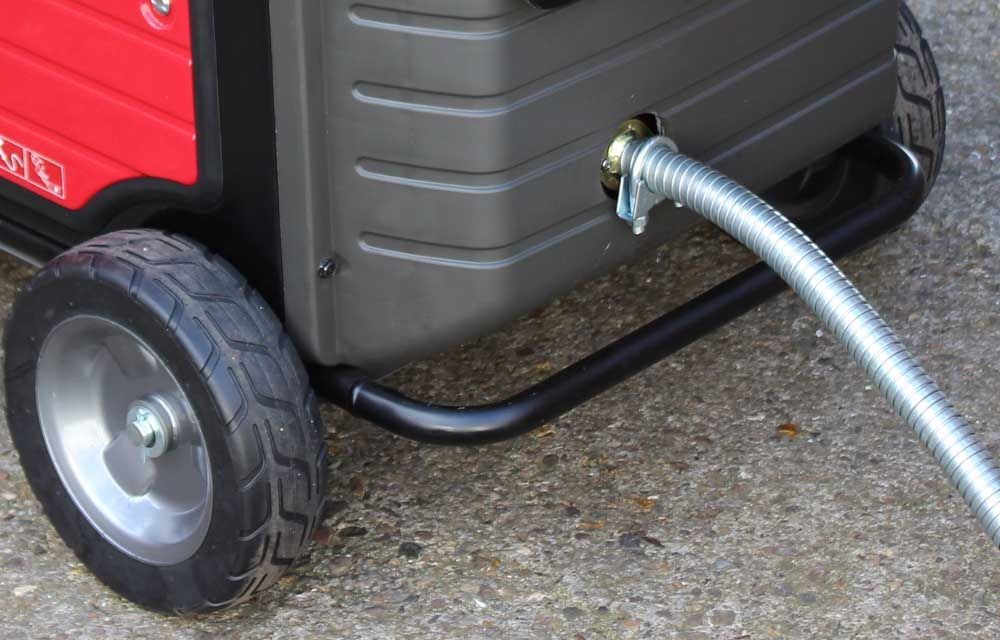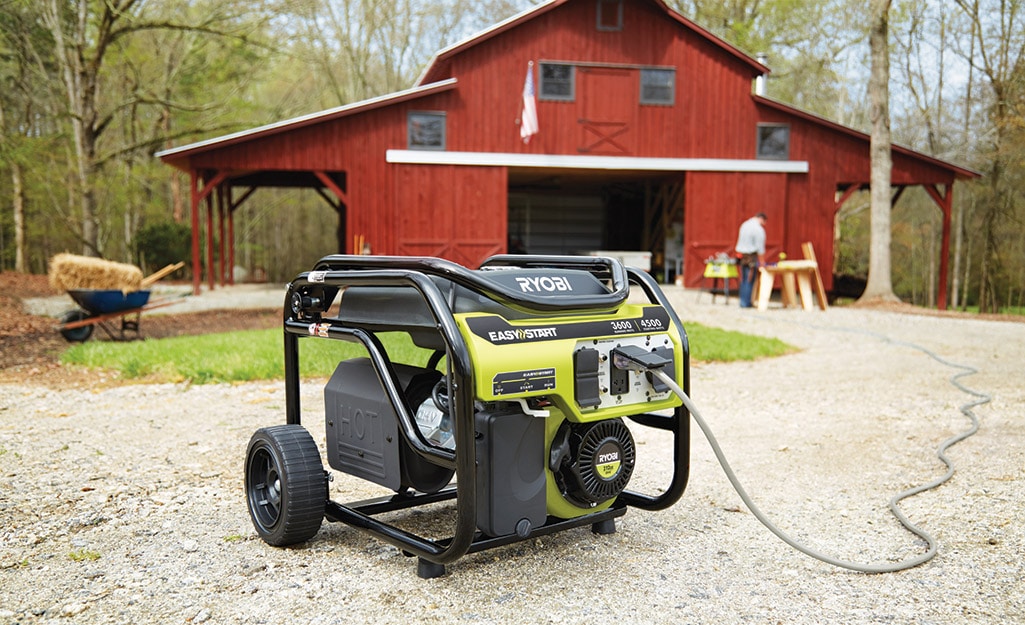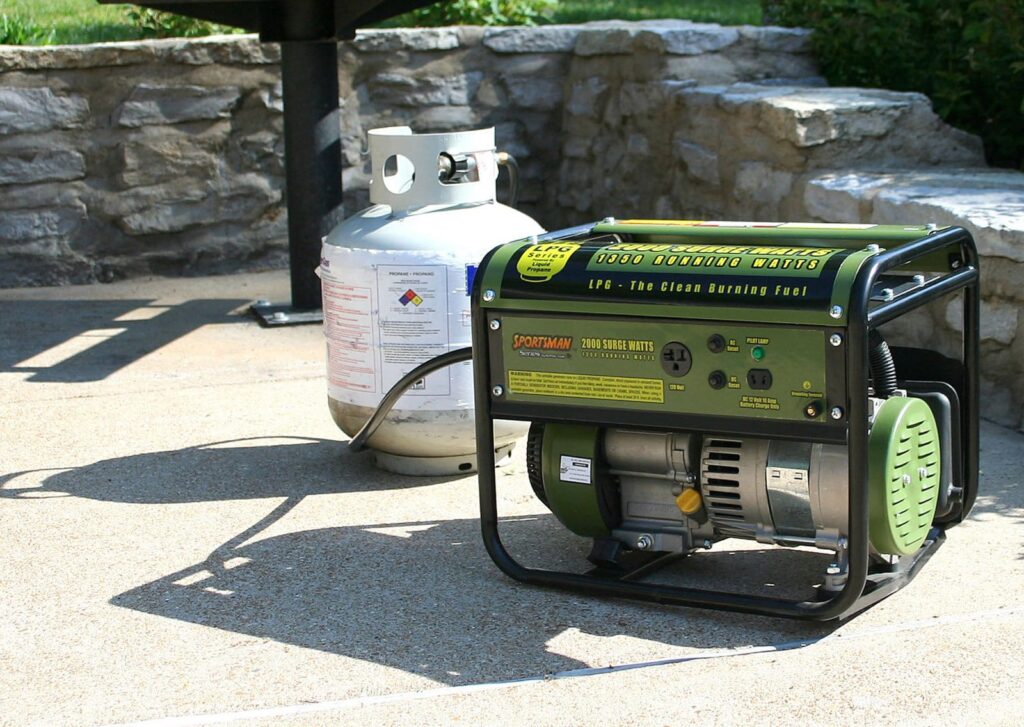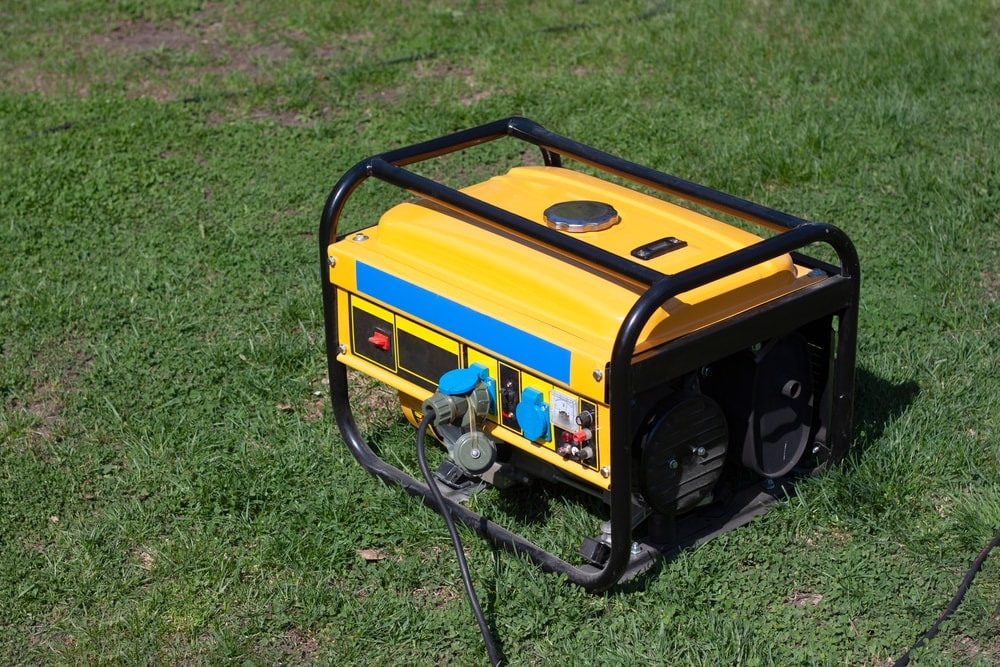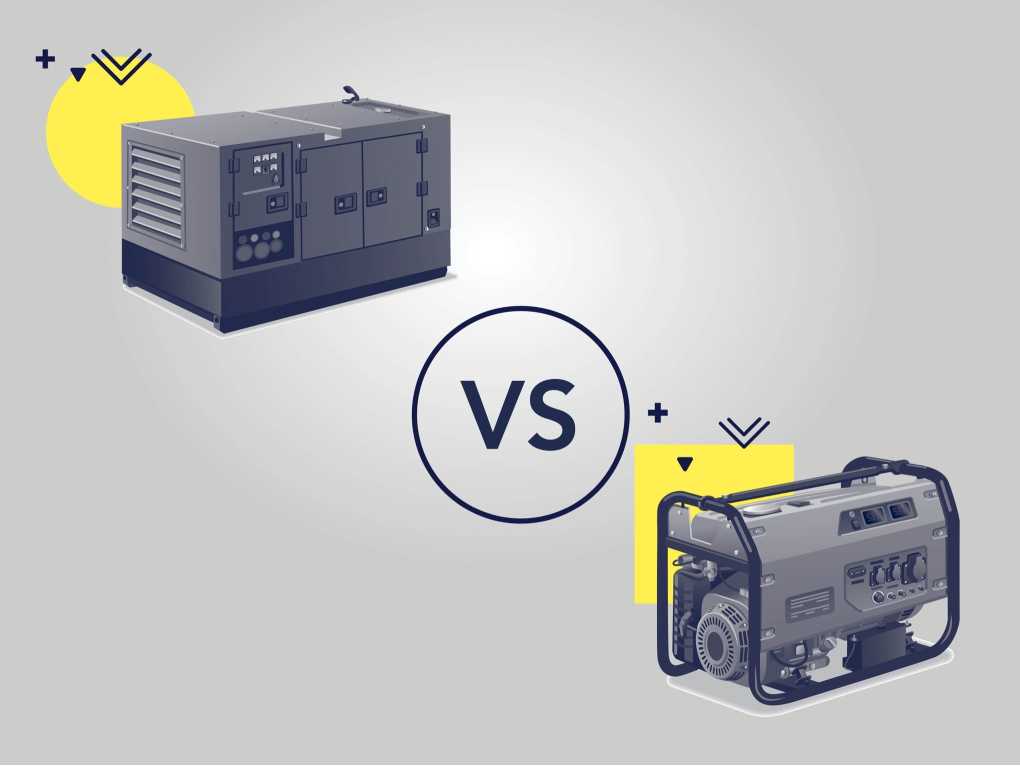Light is life. When the supply from the grid is off or you’re out of electricity supply coverage, getting an electric generator is essential. Depending on your need for power, there are different types of generators for all load capacities.
From small necessities to the most serious emergency uses, from camping to outdoor living, from village festivals to traveling activities, for use in homes or medical services, industrial activities, and much more.
The increasingly advancing technologies have made it possible to have very competitive and heterogeneous products that fully meet the most disparate needs: powerful and reliable motors, inverter technology, with key or rope start, silent, portable, single-phase, three-phase, with ATS frame, and more.
Indeed, there are
different types of generators
Trusted Source
Best Generator Buying Guide - Consumer Reports
Shopping for a generator? Read about types, features, and other must-know topics in our generator buying guide to make an informed choice.
www.consumerreports.org
? From the conventional generators to the inverter generators, the standby generators, dual-fuel and solar generators. Each has unique properties to cater to a large audience of customers with different needs. In this article, we’ll see how many different types of generators are there, what each can be used for, and the advantages and disadvantages of each.
A generator is a piece of apparatus or equipment used in converting or changing energy from one form to the other. As there are various types, electrical generators are power equipment that changes or converts mechanical energy or motive power into electrical energy. To generate energy, they use other energies from petroleum hydrocarbon generated fuel such as gasoline, propane, natural gas, or diesel, or renewable sources such as wind, water, or the sun.
Different generator types exist. To decide between them, you must therefore base yourself on several criteria such as the budget you have, the power you need, and the purpose of use. This equipment exists in the market in six different forms. They include the conventional generators, the inverter generators, the standby generators, the solar generators, the dual-fuel generators, and the generators powdered by hydrogen.
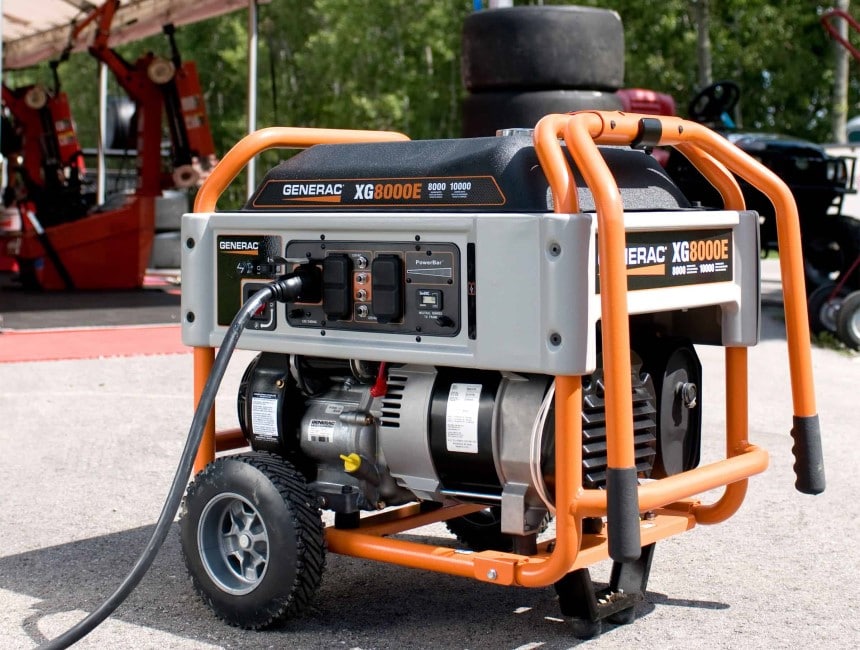
They are generators with alternators that produce electrical output from fuel such as gasoline, diesel, or propane.
The alternator transforms the rotary motion of a motor shaft, hence mechanical energy, into an electric current.
For this, the alternator consists of a rotor equipped with electromagnets rotating inside a stator composed of a coil of copper wire. The successive magnetic fields created by the rotation of the magnets generate an induced electric current distributed to the output of the generator set after treatment by the electronic components which ensures the regulation. The nominal voltages range from 230Vac single-phase to 400Vac three-phase, or even in some cases in high voltage (for example in 5.5KV).
Small domestic conventional generators rotate at speeds of around 1,500 rpm or even up to 3,000 rpm.
The rotation of the alternator’s electromagnets creates a high resistivity proportional to the amount of current demanded. As soon as the amount of current increases, the load on the motor is greater.
The power, therefore, depends on the power of the alternator and the power of the engine. As the engine sizing is always calculated in proportion to the power of the alternator, it is the power of the alternator that defines the generator set.
The circuit breaker limits the apparent power of the alternator. This prohibits any overshoot over a long period but allows temporary overloads.
Most of the time, the surge and running powers are indicated on the generator itself.
As they are generators with limited power outputs, conventional generators must be protected from overloads by a circuit breaker or thermal protection. This protection ensures very relative protection of the motor. Given its fragility, it is better to ensure that it does not receive any lasting overload.
10 KVA (power limit) conventional generators, for example, usually deliver around 8 KW maximum (engine limit).
Currently, the power of small generators is normally indicated in KW, with an indication of the possible apparent power or the maximum permanent current. There are several probes and sensors that protect the conventional generator engines. They monitor and control the generator engine.
The best conventional generators are generally used as backup power equipment for the home during emergencies. They are used for RVing, camping, or boating. Powerful ones with a power of more than 5,000 watts can also be used in construction sites and for commercial use.
Conventional generators use gasoline, propane, or diesel, which can be in single or dual form.
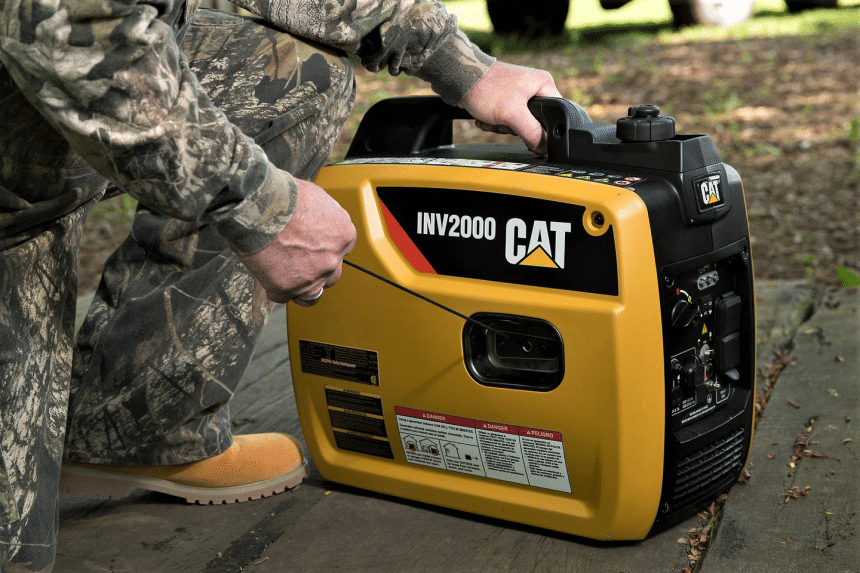
Direct current is converted into alternating current, but this type of power generator is equipped with a special inverter that compensates for voltage fluctuations.
So the drive motor and generator are separated from each other, which leads to a pure sine curve for electricity. This means that sensitive end devices such as a laptop or tablet can be connected without any problems.
Inverter generators are light and mobile. You can use an inverter power generator for your gazebo or take it with you on your next camping holiday. Inverter technology can produce a perfectly clean current at 50 or 60 Hz while adapting the frequency of rotation of the motor according to your needs. Like the other types of generators, the use of this type of device is subject to certain safety rules.
The best inverter power generator is particularly quiet and powerful. Sound levels are measured in decibels or dB for short. The average noise level of an inverter generator is around 51 to 55 dB. Meanwhile, for residential use, 45 to 55 dB is the required range set by the EPA Trusted Source EPA Identifies Noise Levels Affecting Health and Welfare | About EPA | US EPA Noise levels requisite to protect public health and welfare against hearing loss, annoyance and activity interference were identified today by the Environmental Protection Agency. These noise levels are contained in a new EPA document, “Information on Levels of Environmental Noise Requisite to Protect Public Health and Welfare with an Adequate Margin of Safety”. archive.epa.gov . Thankfully, there are inverter generators with noise levels below 50 dB.
Many quiet inverter generators have an eco mode. Eco usually stands for reduced fuel consumption. This is often accompanied by a lower speed, which ensures low-noise operation.
Asides from being quiet, inverter power generators require little fuel overall. With an inverter power generator, you get a generator of the latest generation.
Inverter generators are compact power generators that run on gasoline, propane, or both. However, gasoline-powered inverter generators are the most common.
This has several advantages over those operated with diesel. A gasoline-powered generator is initially similar to a gasoline-powered car and cheaper to buy.
When purchasing an inverter generator, always take a look at the capacity of the tank. The capacity of the tanks of inverter power generators fluctuates between 3 liters and 10 liters and sometimes even more. In general, the bigger the tank, the less often you need to top up with fuel. However, the bigger it is, the heavier and larger in dimensions it will be.
In any case, portable inverter generators with an output of around 1000W to 2500W usually have an easy-grip handle to take them with you anywhere, and their dry weight is usually less than 50 pounds. For example, the WEN 56200i generator weighs 48 pounds, while Honda EU2200i weighs around 40 pounds.
To be able to generate electricity, the generator sets are equipped with a motor. This is either a 2-stroke engine or a 4-stroke engine. Nowadays a power generator is mostly equipped with a four-stroke engine. That’s because two-stroke engines are less efficient and environmentally friendly.
The output of an inverter power generator is specified in watts, just like with many other technical or electrical devices. Inverter generators have output range of around 1,000 watts to 8,000 watts. But if you do not need a high-voltage current to operate an oven, for example, an inverter generator with 1500W to 2500W will be sufficient.
Some of the features found in inverter generators include, for example, the so-called low oil protection feature or overload protection. Also, pay attention to the level of protection the generator has if you want to operate the device outdoors. The protection class describes the extent to which the generator is protected against dust and moisture. Some inverter power generators, which also have an illuminated display, clearly show you all relevant data such as voltage or power.
The inverter generator set is specially designed to provide safer power to sensitive electrical devices and equipment, such as television, telephone, computer, etc.
Gasoline and propane are two of the most used fuels in inverter generators.

Depending on the customer’s priority, a standby generator can have a diesel, natural gas, or gasoline engine. Models requiring natural gas fuel can be connected to the local natural gas network.
Other options range between automatic ignition (the one that connects directly when the power goes out) or electric ignition (which requires that we turn it on manually). On the other hand, there are generally two types, standby generators that are directly connected to the electrical installation of the home or business or, the portable models. The latter ones can be used in remote areas or for camping because they have handles and small hard wheels.
[/wpmfc_cab_ss]These generators have a lower range of around 7,000 watts to 40,000 watts or more. During its operation, any device that needs electricity can be connected. The goal of these generators, as well as most of them, is to provide peace of mind to the user.[/wpmfc_cab_ss]
Emergency equipment works when a natural disaster, accident, or failure occurs in the system that temporarily affects the electricity supply. Starting from these three situations, you can find them in:
According to most reviews, home standby generators designed by Generac, are by far the most reliable and time-proven ones.
Standby generators are used for powering homes, as well as for some commercial setups like hospitals.
Propane, gasoline, diesel, or natural gas can be used to power the generator. However, there are standby generators that use hydrogen power.
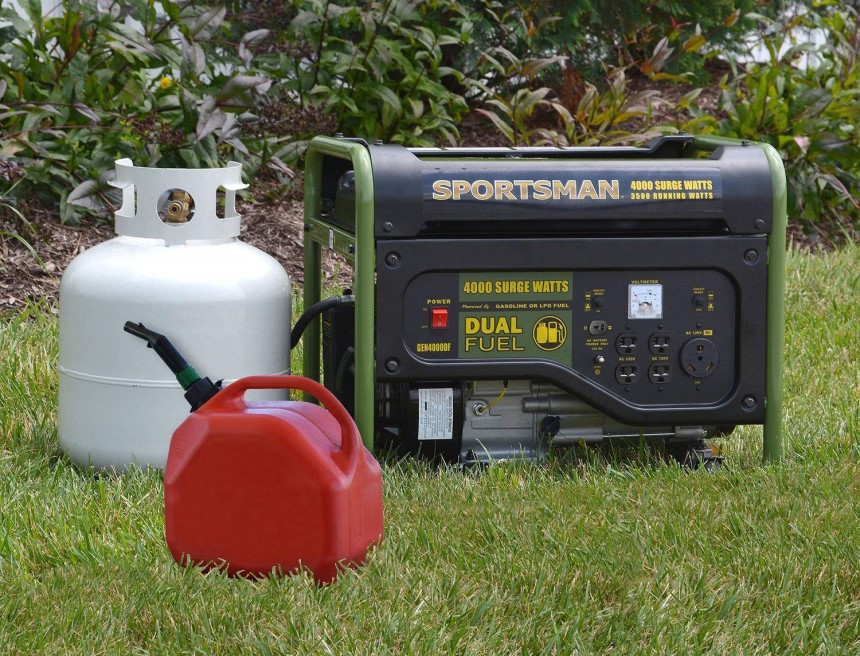
Dual-fuel generators often take advantage of two types of fuel, gasoline, and propane. Gas is easier to obtain, but it also has its downsides.
Propane is cleaner, quieter, and cheaper. If you don’t have gas, you can always use gasoline for the generator.
In any case, dual-fuel generators help you settle for fuel that is most accessible and readily available during the time you need backup power.
Gasoline is usually accessible and is a fuel that is very easy to obtain. With this in mind, gas can be somewhat expensive. The fumes are also somewhat toxic and can be easier to spill. Meanwhile, propane has several important advantages. Also known as liquid propane gas (LPG), it is considerably cheaper and very difficult to spill.
Propane is a fuel combustion cleaner. So, eventually, there will be lesser wears on the generator engine. A generator that runs on LPG tends to be quieter.
Dual-fuel generators are available in different types and sizes. They can be used for camping, caravaning, as a backup in hospitals, hotels, residential homes, or other places.
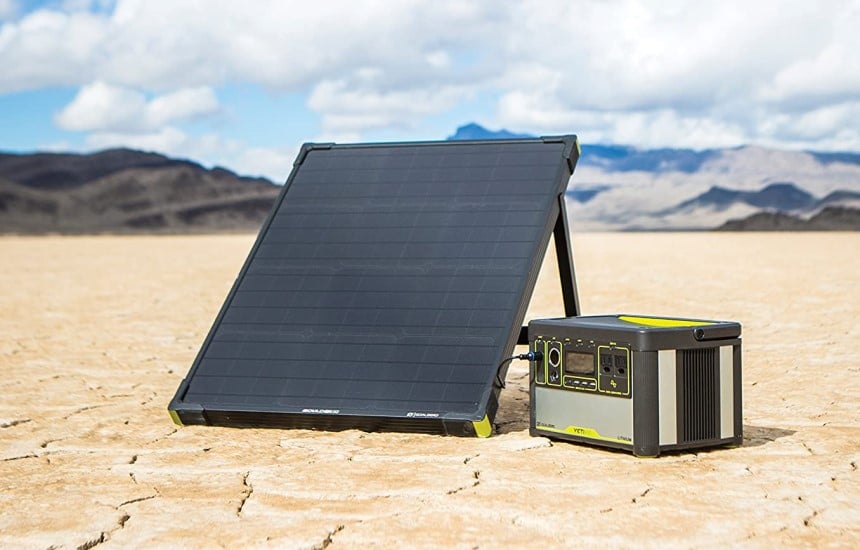
Although similar in function to other types of generator sets, solar generators rely on a very different technology in their energy capture. Fossil fuel generators, or even wind or hydraulic energy generators operate by mechanical action causing electromagnetic elements to move, creating an electric current. However, solar energy, or more specifically the photons that compose it, is captured directly by the silicon that makes up solar panels.
Silicon, a semiconductor material, receives these photons and retransmits them directly in the form of direct current. There is therefore no mechanical intermediary strictly speaking.
The other big difference between a solar charging station and a more traditional generator is its energy storage. Indeed, while a conventional generator will produce electricity when it is supplied with fuel, those using solar energy rely on their ability to store the energy produced to restore it when needed.
To put it simply, a solar generator is similar to a large external battery, but it can be recharged by a photovoltaic panel. It’s a portable energy generator that recharges by solar panel. Below is a list of components commonly found in solar generator sets, although there may be subtle differences from model to model.
The main component, the battery allows the storage of electricity. Mainly of the Li-ion type, there are also batteries of the LiFePO4 or Lithium Iron Phosphate type. Lithium-ion batteries offer better performance in terms of durability over time but are also less polluting. A battery is defined by:
For the sake of simplicity, know that the higher these values are, the more your battery will be able to supply energy-intensive elements at the same time, and over time.
A solar generator does not produce energy by itself. For this, it needs a source of energy to be stored, and thus needs inputs to carry electricity to the batteries. Typically, these portable charging stations have three possible power types:
The charging speed of your battery depends on the strength of the energy source.
The regulator is a system to avoid overload when using solar panels. It thus offers protection for your battery. Each solar generator is equipped with an MPPT regulator.
Also called an inverter, this device has the task of converting the direct current created by the photovoltaic panels to transform it into alternating current, usable by the greatest number of electrical devices and household appliances. The inverter and regulator are indistinguishable in portable solar devices
This allows the stored energy to be returned to external electrical devices. So, depending on the size and model of your generator, you will find a variable number of:
This type of device also offers different accessories depending on the model, the most common being:
Also note that solar power generators are generally not delivered with photovoltaic panels, which will then have to be purchased separately.
Note that there are plenty of more or less powerful solar generators, from the Ecoflow Delta with its whopping 3,000 surge and 1,800 rated watts, to the more compact and portable Jackery Explorer 500.
Solar generators are not as powerful as other types of generators, even in the off-grid models. But they can be used outdoors, especially the suitcase designs. Off-grid systems can be used to power homes, companies, and even industries.
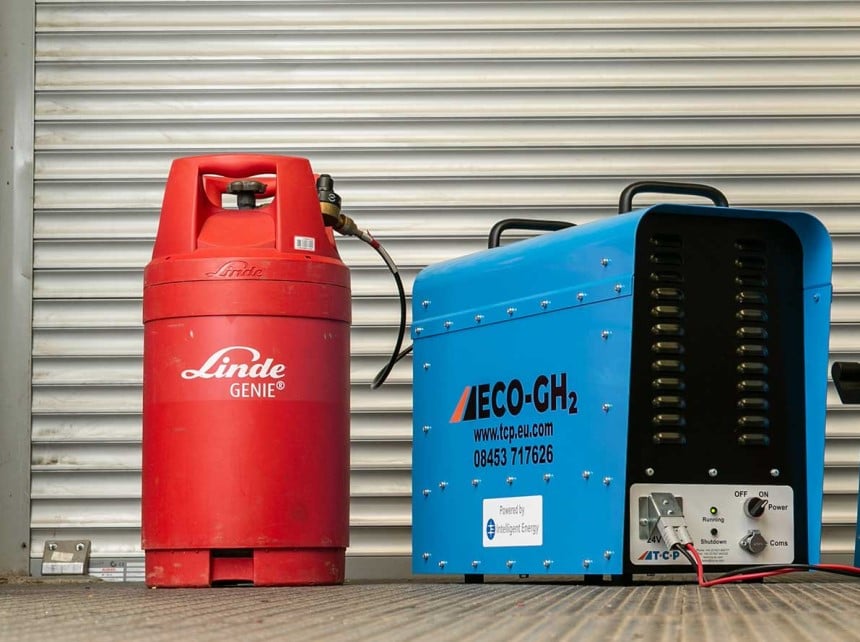
As hydrogen is never stored, as it is being produced, it is inserted into the engine, taking advantage of the suction or vacuum that it produces, and joins the gasoline or diesel, depending on the type of engine with which it works, in the chambers combustion of each cylinder. Thus, it burns together with the fuel used and the air drawn in by the engine.
This combination, which burns easily, is more efficient than the combustion of the original fuel and causes additional engine cooling, due to the presence of water vapor, which is expelled through the exhaust pipe to the outside.
The great advantage of the hydrogen generator set is that, unlike conventional generator sets that work only with gasoline or diesel fuels, it does not pollute as much, reducing the emission of gases harmful to the atmosphere such as CO2 by between 70-95%.
In the same way, the hydrogen generator set saves up to 50% in fuel and increases the level of autonomy of the device. Also, it increases the power of the engine up to 20%, provides longer life and purity of the oil, at the same time that it extends the useful life of the engine and improves its performance, reducing its temperature and causing combustion in a cooler state.
Also, the engine noise is almost imperceptible. So it is not annoying or harmful to health, and it is a very safe system since the hydrogen generator set only produces the gas that the engine needs, without accumulating it.
Hydrogen generators are used for the same purposes as conventional ones. Hydrogen generators can work with all types of engines and boilers, gasoline, diesel, biodiesel, agro-diesel, LPG, NGV / GLC, or biomass, and are used especially to operate with vehicles, be they motorcycles, trucks, cars, or boats, although they also operate with the machinery of different kinds.
Knowing which generator type to choose depends on your needs. Would you like to keep basic equipment at home powered without any engine noise? You have an option between solar generators and inverter generators. Do you have a business you’d like to provide with off-grid electricity supply during a power failure? Then standby generators are your choice. If you are a traveler, an RVer, or someone who would like to have electricity supplied in your boat, then a portable inverter or convention generator is what you need.
A generator is a device that transforms a source of energy into electricity. This source of energy can be fossils, such as petroleum, but also renewable, such as hydroelectric power, wind power, or photovoltaic. The energy thus produced will be used to power other devices, and can be stored for future applications.
There are different types of generators for every person, business, and organization. There are the conventional generators, the inverter type, the solar generators, the standby generators, and the hydrogen-fueled generators. Each has different features which make them unique. However, to choose, you have to ask yourself the question of power needed, noise, portability, fuel type, among others.
